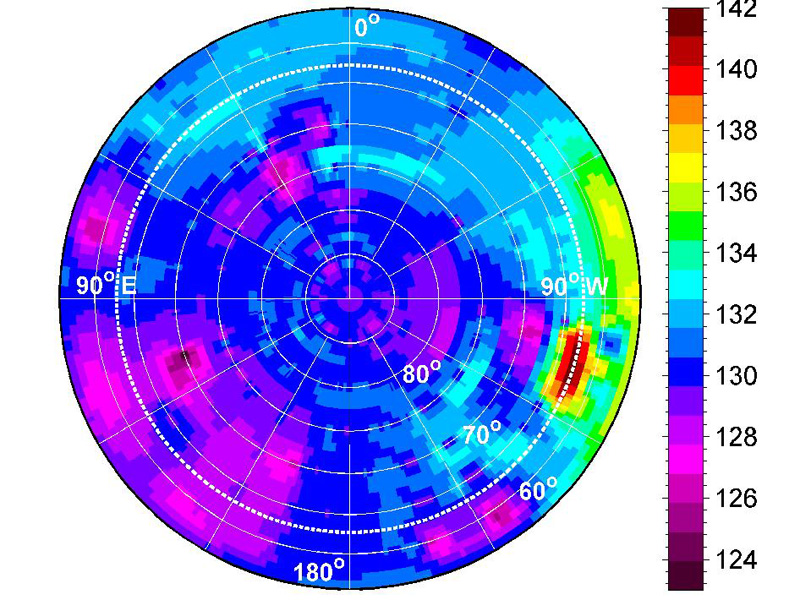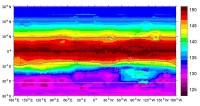New modeling shows that, under present conditions, Vesta’s polar regions are cold enough (less than about 145 kelvins) to sustain water ice for billions of years, as this map of average surface temperature around the asteroid’s south pole indicates. (Image credit: NASA/GSFC/UMBC)
Home New modeling shows that, under present conditions, Vesta’s polar regions are cold enough (less than about 145 kelvins) to sustain water ice for billions of years, as this map of average surface temperature around the asteroid’s south pole indicates. (Image credit: NASA/GSFC/UMBC) New modeling shows that, under present conditions, Vesta's polar regions are cold enough (less than about 145 kelvins) to sustain water ice for billions of years, as this map of average surface temperature around the asteroid's south pole indicates. (Image credit: NASA/GSFC/UMBC)



